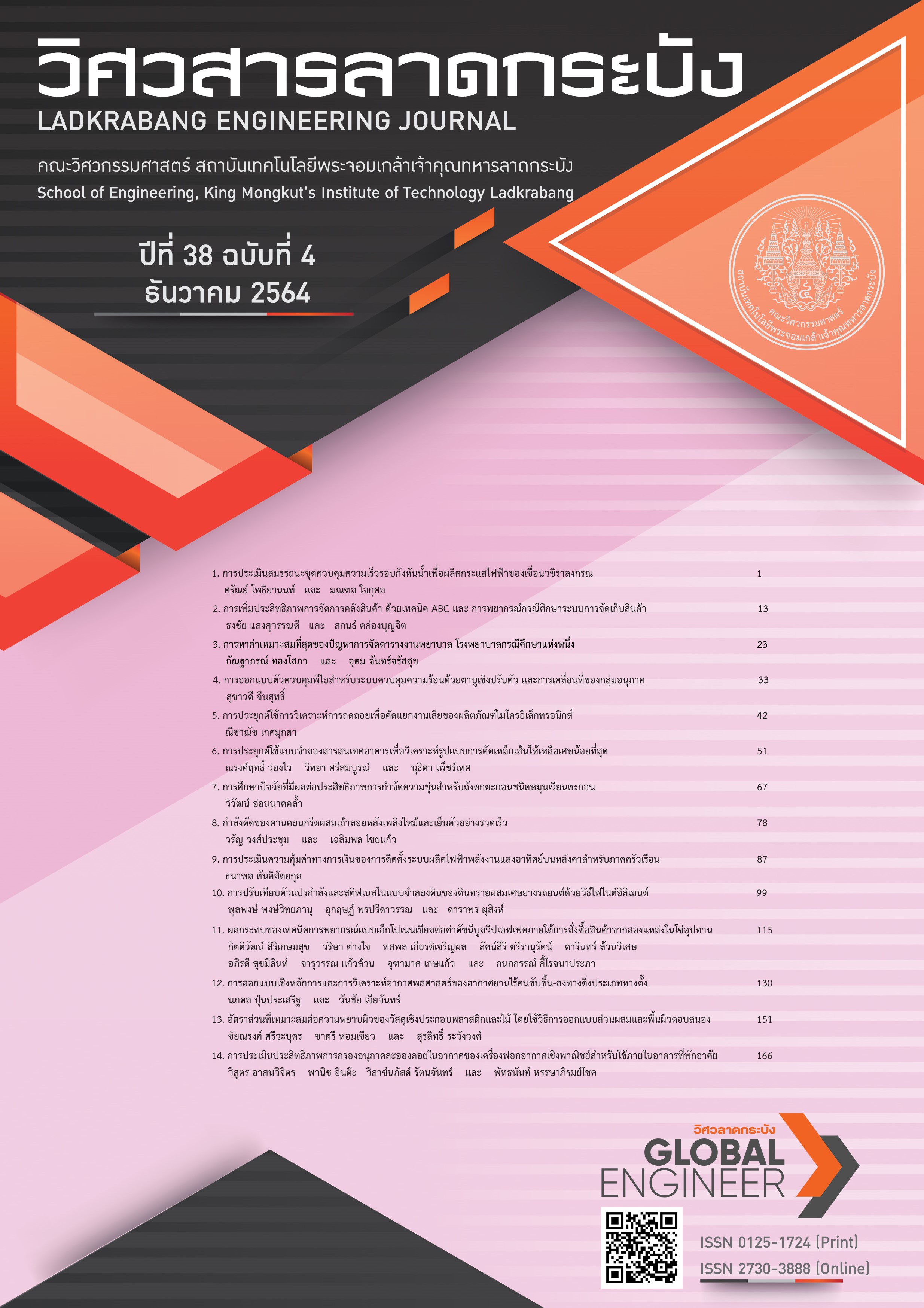Optimization of Nurse Scheduling Problem: A hospital case study
Keywords:
Nursing Scheduling Problem, Work Distribution, Optimization, Exact solutionAbstract
Nurse Scheduling is a complicated task which highly relies on the experience of scheduler. It usually takes a long time to finish the task. The chance of human error is high, resulting in unbalanced workloads among nurses and inconsistency with the requirements of the hospital. Therefore, this research examines the nurse scheduling problems in order to find a way to assign nurses to shifts properly, and to solve the unbalanced workload problem. A mixed-integer linear program was used to experiment with the case study problem in a hospital. The results showed that the difference in workload among nurses can be reduced from three shifts to only one shift with the help of the mathematical model. In terms of the difference in workload measured by the standard deviation, it was reduced from 0.790 to 0.444. In conclusion, the proposed mathematical model is capable of covering all scheduling conditions of the hospital. It also helps distribute the workloads of nurses effectively.
References
K. Abhicharttibutra, W. Kunaviktikul, S. Turale, O. A. Wichaikhum, and W. Srisuphan, “Analysis of a government policy to address nursing shortage and nursing education quality,” International Nursing Review, vol. 64, no. 1, pp. 22–32, 2017, doi: 10.1111/inr.12257.
A. Nantsupawat, W. Kunaviktikul, R. Nantsupawat, O. A. Wichaikhum, H. Thienthong and L. Poghosyan, “Effects of nurse work environment on job dissatisfaction, burnout, intention to leave,” International Nursing Review, vol. 64, no. 1, pp. 91–98, 2017, doi: 10.1111/inr.12342.
E. K. Burke, P. De Causmaecker, G. Vanden Berghe, and H. Van Landeghem, “The state of the art of nurse rostering,” Journal of Scheduling, vol. 7, pp. 441–499, 2004, doi: 10.1023/B:JOSH.0000046076.75950.0b.
P. S. Chen, Y. J. Lin and N. C. Peng, “A two-stage method to determine the allocation and scheduling of medical staff in uncertain environments,” Computers and Industrial Engineering, vol. 99, pp. 174–188, 2016, doi: 10.1016/j.cie.2016.07.018.
Cheang, B., Li, H., Lim, A. and Rodrigues, B., “Nurse rostering problems a bibliographic survey, ” European journal of operational research, vol 151, no. 3, pp. 447–460, 2003, 10.1016/S0377-2217(03)00021-3.
J. Tewinburanuwong, “Application of genetic algorithms for staff nurse scheduling,” M.Eng. Thesis, Dept. Industrial Engineering, Chulalongkorn Univ., Bangkok, Thailand, 2000.
R. M’Hallah and A. Alkhabbaz, “Scheduling of nurses: A case study of a Kuwaiti health care unit,” Operations Research for Health Care, vol. 2, no. 1–2, pp. 1–19, 2013, doi: 10.1016/j.orhc.2013.03.003.
A. A. El Adoly, M. Gheith and M. Nashat Fors, “A new formulation and solution for the nurse scheduling problem: A case study in Egypt,” Alexandria Engineering Journal, vol. 57, no. 4, pp. 2289–2298, 2018, doi: 10.1016/j.aej.2017.09.007.
B. Jaumard, F. Semet and T. Vovor, “A generalized linear programming model for nurse scheduling,” European Journal of Operational Research, vol. 107, no. 1, pp. 1–18, 1998, doi: 10.1016/S0377-2217(97)00330-5.
R. Jenal, W. R. Ismail, L. C. Yeun and A. Oughalime, “A cyclical nurse schedule using goal rogramming,” Journal of Mathematical and Fundamental Sciences, vol. 43A, no. 3, pp. 151–164, 2011, doi:10.5614/itbj.sci.2011.43.3.1.
A. Dumrongsiri and P. Chongphaisal, “Nurse scheduling in a hospital emergency department: A case study at a thai university hospital,” Songklanakarin Journal of Science and Technology, vol. 40, no.1, pp. 187–196, 2018.
A. A. Constantino, D. Landa-Silva, E. L. de Melo, C. F. X. de Mendonça, D. B. Rizzato and W. Romão, “A heuristic algorithm based on multi-assignment procedures for nurse scheduling,” Annals of Operations Research, vol. 218, pp. 165–183, 2014, doi: 10.1007/s10479-013-1357-9.
M. B. S. Kumar, M. G. Nagalakshmi and D. S. Kumaraguru, “A Shift Sequence for Nurse Scheduling Using Linear Programming Problem,” IOSR Journal of Nursing and Health Science, vol. 3, no. 6, pp. 24–28, 2014, doi: 10.9790/1959-03612428.
J. F. Bard and H. W. Purnomo, “Real-time scheduling for nurses in response to demand fluctuations and personnel shortages,” in PATAT 2004. Proceedings of the 5th International Conference on the Practice and Theory of Automated Timetabling, Pittsburgh, PA USA, Aug. 18–20, 2004, pp. 67–87.
G. Laporte and Y. Nobert, “A Branch and Bound Algorithm for the Capacitated Vehicle Routing Problem,” Operations-Research-Spektrum, vol. 5, pp. 77–85, 1983, doi: 10.1007/BF01720015.
J. J. S. Chávez, J. W. Escobarb*, M. G. Echeverri, and C. A. P. Meneses, “A heuristic algorithm based on tabu search for vehicle routing problems with backhauls,” Decision Science Letters, vol. 7, no. 2, pp. 171–180, 2018, doi: 10.5267/j.dsl.2017.6.001.
Downloads
Published
How to Cite
Issue
Section
License
Copyright (c) 2021 Faculty of Engineering, King Mongkut’s Institute of Technology Ladkrabang

This work is licensed under a Creative Commons Attribution-NonCommercial-NoDerivatives 4.0 International License.
The published articles are copyrighted by the School of Engineering, King Mongkut's Institute of Technology Ladkrabang.
The statements contained in each article in this academic journal are the personal opinions of each author and are not related to King Mongkut's Institute of Technology Ladkrabang and other faculty members in the institute.
Responsibility for all elements of each article belongs to each author; If there are any mistakes, each author is solely responsible for his own articles.






